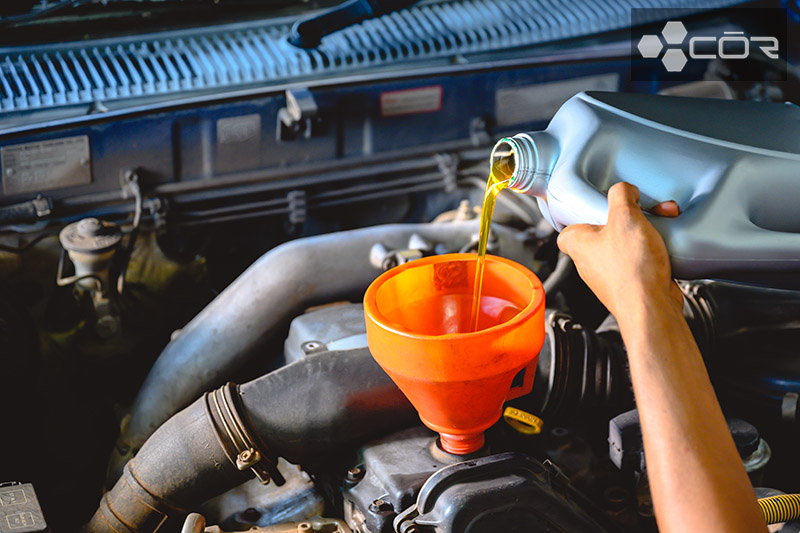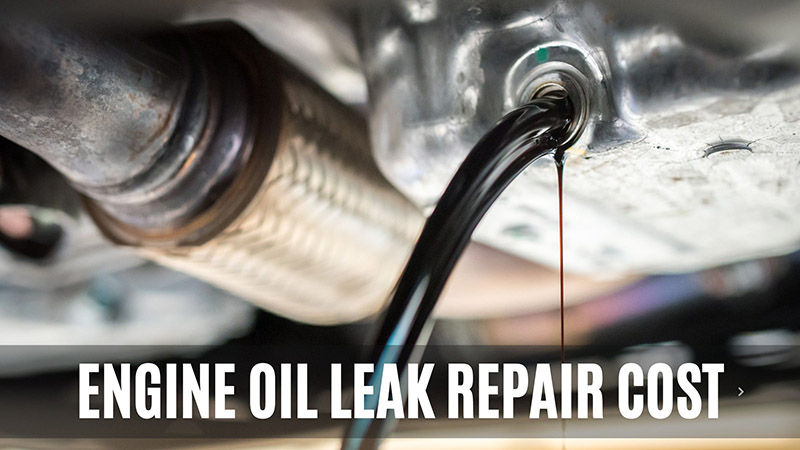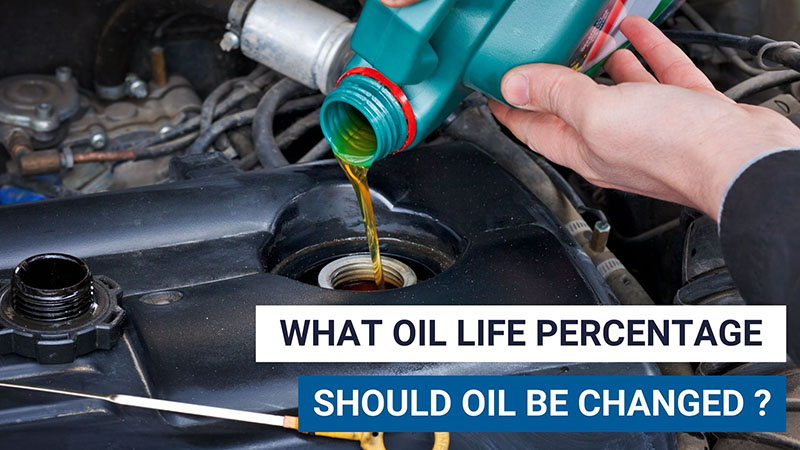Are you curious about the average price for oil change? Knowing the price of this routine maintenance service is crucial for budgeting and ensuring the proper care of your vehicle.
I have gathered all the factors that influence the cost of an oil change, ranging from the type of oil used to the location and service provider. Once you understand these factors, you can make informed decisions and find the best value for your oil change needs.
In this article:
How Much Does An Oil Change Cost?
The cost to get an oil change ranges from $20-$100, with synthetic oil being the most expensive. However, the bill might fluctuate depending on the type and volume of oil you need, the car model, the store location, and other add-on services…

Conventional Oil
Conventional oil, also known as mineral oil, is the traditional option for oil changes. It is derived from crude oil and provides basic lubrication properties. On average, an oil change with conventional oil can range from $20 to $50, depending on factors such as location, service provider, and additional services included in the package.
Semi-Synthetic Oil
Semi-synthetic oil, also referred to as a blend or synthetic blend, is a mixture of conventional and synthetic oils. It offers improved performance and better protection compared to traditional oil. This type of synthetic oil change price typically falls in the range of $40 to $70, depending on various factors.
Synthetic Oil
Synthetic oil is a high-performance lubricant engineered to provide superior protection and performance. It is designed to withstand extreme temperatures and offers extended oil change intervals.
The full synthetic oil change price tends to be higher, ranging from $60 to $100 or more, depending on the vehicle, location, and other factors.
Note
Besides the type of oil, the car model and the shop you choose to do this can also affect the price.
For instance, the cost of an oil change for my BMW was around $135-175, and this maintenance for my Toyota only cost $50. Yet, my wife’s Lexus oil change charge is between $75-180. Of course, we all brought our pet cars to the same auto shop nearby.
Prices For Oil Changes At Popular Chain Stores

Popular chain stores offer competitive pricing and convenience when it comes to oil changes. While specific prices may vary depending on location and promotions, here is a general overview of oil change prices at some well-known automotive service chain stores.
| Service Provider | Oil Change Cost |
| Firestone | $29.99 – $69.99 |
| Meineke | $34.95 – $69.95 |
| O’Reilly | $59.95 |
| Walmart | $24.88 – $54.88 |
| Jiffy Lube | $49.99 – $109.99 |
| Valvoline | $39.99 – $89.99 |
| Take 5 Oil Change | $49.99 – $79.99 |
| Midas | $29.99 – $69.99 |
| SpeeDee | $29.99 – $79.99 |
| Pep Boys | $34.99 – $99.99 |
| AAA-Owned Repair Centers | $19.95 – $ 29.95 |
| Big O Tires | $39.99 – $79.99 |
| Grease Monkey | $29.99 – $79.99 |
| Mavis | $29.95 – $64.99 |
Notice that these prices are approximate and can vary based on factors such as the type of oil, filter, additional services, and any ongoing promotions or discounts. It’s always recommended to contact your local chain store for the most accurate and up-to-date pricing information.
Factors Affect The Price Of This Service
Several factors can affect the price of an oil change service. Here are the most common ones.
- Location: Regional differences in prices exist. It frequently charges more in areas with a greater cost of living, such as urban California.
- Needed oil amount: Some little engines only require 3-1/2 quarts of oil, whereas high-performance or truck engines may require six or eight.
For instance, the little inline-four in a first-generation Mazda Miata requires roughly 3.4 gallons, whereas the 3.0-liter diesel for the W123 Mercedes-Benz 300D needs between seven and eight quarts, which is more than double that amount.
- Viscosity of the oil: The cost of high-viscosity 20W-50 oil is slightly more than that of low-viscosity 10W-30 oil. High-viscosity oil is necessary for some automobiles with high mileage.
- Oil brand: Some are high-end goods, such as Pennzoil. Some are more affordable than others, like Valvoline. Choosing a high-end brand can result in fewer oil changes being necessary.
- Oil change facility: When compared to the dealer, a lube business will almost always be less expensive to change your oil.
How To Save Money On An Oil Change

Let’s be real; everyone wants to get this service completed at the lowest price possible. After years of being an auto owner, here are some tips I have used to save extra cash for myself.
- Look for coupons: Keep an eye out for coupons, discounts, or specials offered by service centers or oil change providers. They often have promotional offers that can significantly reduce the cost.
- DIY oil changes: If you have the necessary tools and knowledge, consider performing the oil change yourself. You can purchase the oil and filter at a lower cost from an auto parts store and follow the instructions in your vehicle’s owner manual.
- Buy oil and filters in bulk: If you prefer DIY engine oil changes, consider buying oil and filters in bulk. Purchasing larger quantities can often result in lower per-unit costs, saving you money in the long run.
- Skip additional maintenance services: Service centers may recommend additional services during an oil change, such as air filter replacement or fluid top-ups. Assess whether these services are necessary at that moment or if they can be done at a later time to save on the overall cost.
- Regular maintenance: Proper maintenance, including timely oil changes, helps preserve the longevity of crucial engine components. Well-lubricated engine parts experience less friction, reducing wear and tear. This extends the life of components such as pistons, bearings, and camshafts, saving you money on premature replacements.
- Join rewards programs: Some service centers or oil change providers have loyalty or rewards programs that offer discounts or special offers to frequent customers. Consider joining these programs to save money over time.
Frequently Asked Questions
How Frequently Should I Change My Vehicle’s Oil?
As a general guideline, changing your vehicle’s oil every 5,000 to 75,000 miles or as specified in your vehicle’s owner’s manual is recommended. Still, the actual frequency of oil changes depends on various factors, including the car make, model, and the type of oil used.
How Long Does An Oil Change Take?
On average, an oil change takes around 30 to 45 minutes. Yet, the precise time can vary depending on factors such as the service provider, the type of vehicle, and additional services requested. It’s best to check with the specific service center for a more accurate time estimate.
Does Changing Oil Save Money?
Yes, changing oil regularly can save you money in the long run. It helps maintain engine health, improve fuel efficiency, and prevent costly engine damage. By avoiding major repairs or premature engine replacements, you can save significant amounts of money on repairs and ensure your vehicle’s longevity.
The Bottom Line
While oil change prices may vary based on several factors, it’s crucial not to compromise on the quality of service and the health of your engine. Consider factors such as the type of oil, location, and the service provider’s reputation when making your decision.
By budgeting for regular oil changes and prioritizing proper maintenance, you can ensure the longevity and performance of your vehicle, saving you from costly repairs down the road.








